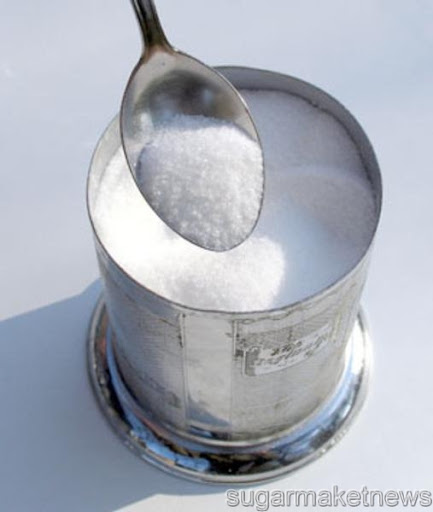 NEW YORK -(Dow Jones)- U.S. baked-goods and candy manufacturers pinched by rising sugar prices are pressuring the government to increase imports of the sweetener.
NEW YORK -(Dow Jones)- U.S. baked-goods and candy manufacturers pinched by rising sugar prices are pressuring the government to increase imports of the sweetener.
The U.S. needs to import sugar every year, but the Department of Agriculture operates a limit for low-tariff or duty-free imported sugar to protect domestic producers.
The USDA generally sets the limit at the minimum allowed by the World Trade Organization. In the current fiscal year ending Sept. 30, it's just over 1.1 million metric tons. Although U.S. sugar-consuming companies often need more than that, U.S. law bars the USDA from raising its limit until after April 1, when most of the domestic sugar crop has been harvested and sold.
Industrial users of sugar are petitioning the USDA to raise the limit after bad weather in this season clipped output in Florida and Mexico.
"We're already facing tight supplies so any [supply] reduction is going to make things worse," said Cory Martin, government relations manager at the American Bakers Association, an industry group whose members include General Mills Inc. (GIS) and Krispy Kreme Doughnut Corp. (KKD). "We're petitioning the USDA to lift the tariff-rate quota."
The current quota was set on July 30, 2010. Since then, the USDA has cut its domestic production forecast almost 3.5%, largely due to the record cold that hit Florida's cane crop late last year. In addition, the price of U.S. raw sugar futures traded on the IntercontinentalExchange has risen 8% since the quota was set.
Michael McDougall, a senior vice president at brokerage Newedge, said an increase in the quota is likely. "There was damage to the crop. Consumption is going up," he said.
The resulting higher sugar prices are already being passed down the supply chain.
Domino Foods Inc., which says it supplies more than one-third of the U.S. sugar market, raised its bulk price by four cents to 61 cents a pound last week, its second price increase this year.
"The U.S. is starved for raw sugar," said Robert Martinelly, Domino's vice president for industrial and export sales.
For sugar users from Sara Lee (SLE) and Kraft Foods Inc. (KFT) to mom-and-pop bakeries, increasing commodity costs are exerting cost pressure.
"[Sugar] is an ingredient we use the most of. Everything we make is cream and cakes and sweets. We use more sugar than we use flour," said Paul Sapienza, owner of the 44-year-old Sapienza Pastry Shop on Long Island, who said his 2010 ingredient costs rose $20,000, or 10%, compared with 2009.
Access to cheaper global sugar supplies could lower those costs, critics of the U.S. quota system say. But sugar farmers argue that the protections keep supplies and prices stable.
"What we've seen this year reflects the uncertainty and challenges of farming in general," said Jack Roney, economic and policy director of the American Sugar Alliance, a farmers group. "We're proud of how the U.S. sugar policy has functioned because it has kept prices stable for the last 25 years."
USDA data show that while U.S. raw sugar futures prices from 1989 to 2009 hovered around the 20-cent mark, they surged in 2010 as world raw sugar prices rose. As a result, U.S. sugar manufacturers raised their prices. U.S. raw sugar futures recently traded at a nearly 14-cent premium to global sugar prices on IntercontinentalExchange.
Critics of the system say the decision to raise the import quota is political and heavily based on farmers' interests.
"Sugar price supports are an unnecessary market intervention that have no place in our 21st century economy," said Sen. Jeanne Shaheen (D., N.H.) said in January, when she introduced a bill co-sponsored by Sen. Mark Kirk (R., Ill.) to eliminate the U.S. sugar program. "It's my aim to eliminate such antiquated government spending programs."
Some sugar users have taken their chances with global prices to save costs.
Over the past 20 years, the Illinois-based Ferrara Pan Candy Company, makers of Lemonhead and Red Hots, moved half of its production -- one-quarter to Toronto, Canada and one-quarter to Juarez, Mexico -- from the United States to take advantage of global sugar prices.
"We had to move...outside the U.S. to stay competitive," said the company's treasurer Jim Buffardi.


























0 comments